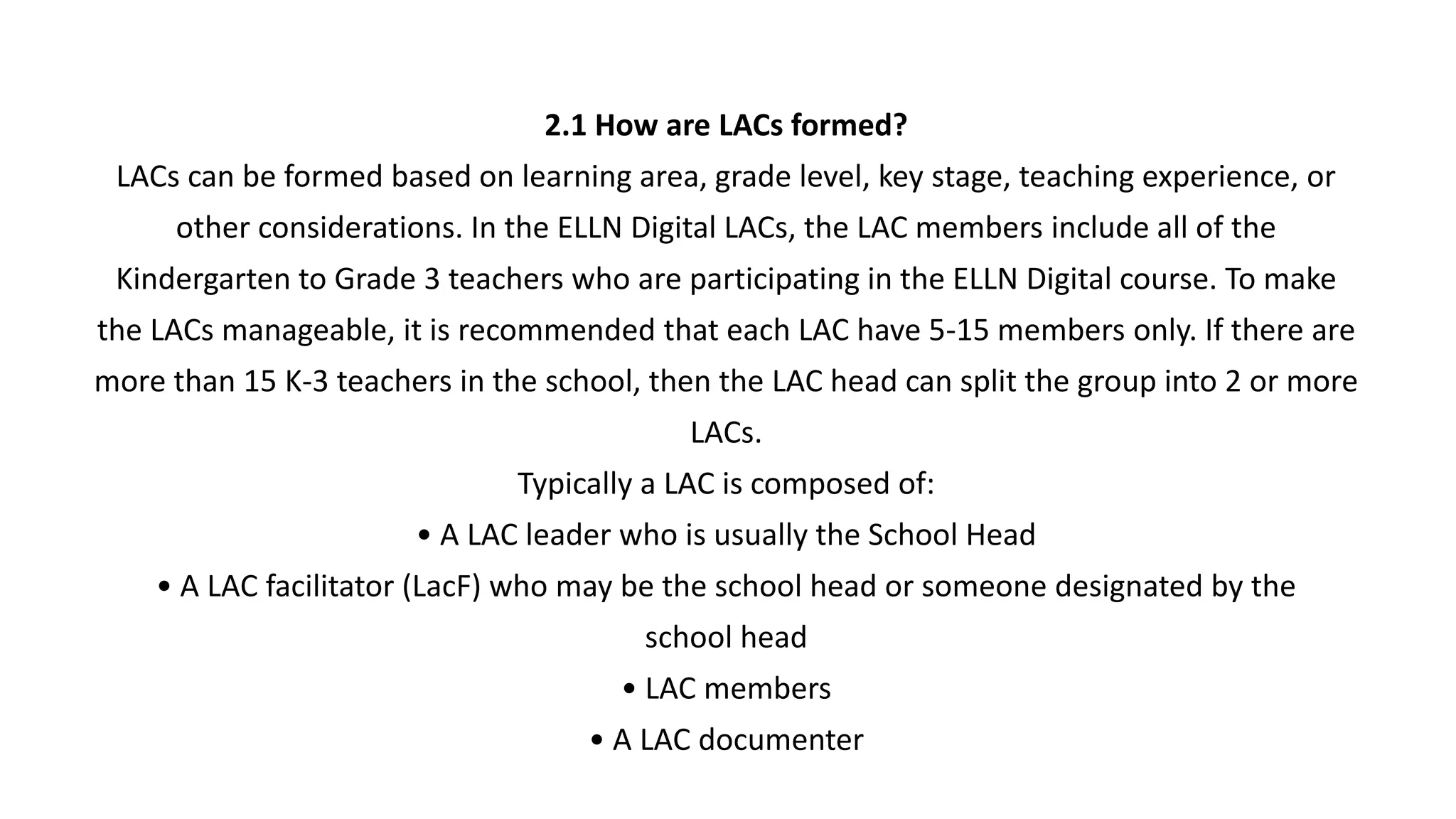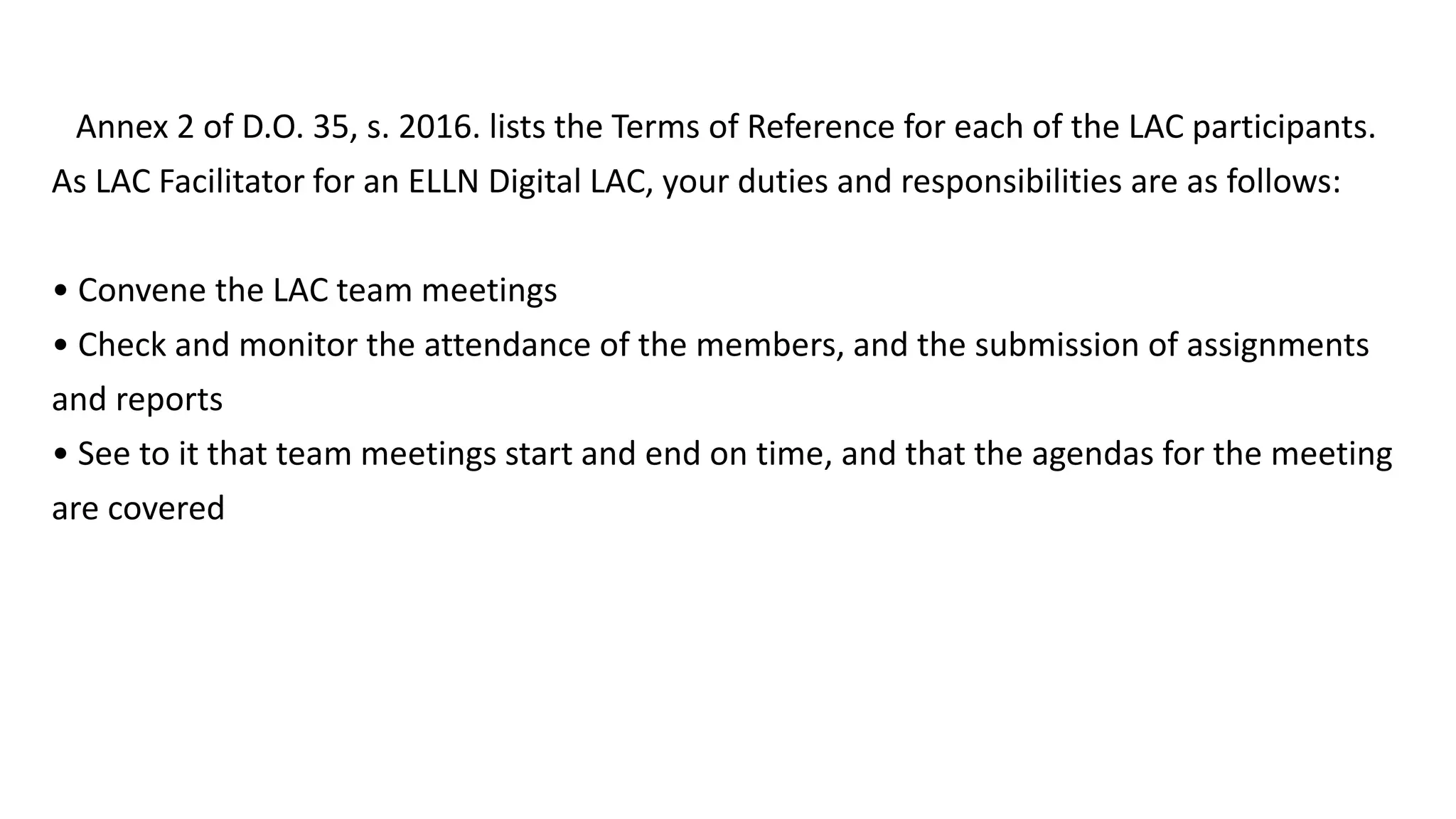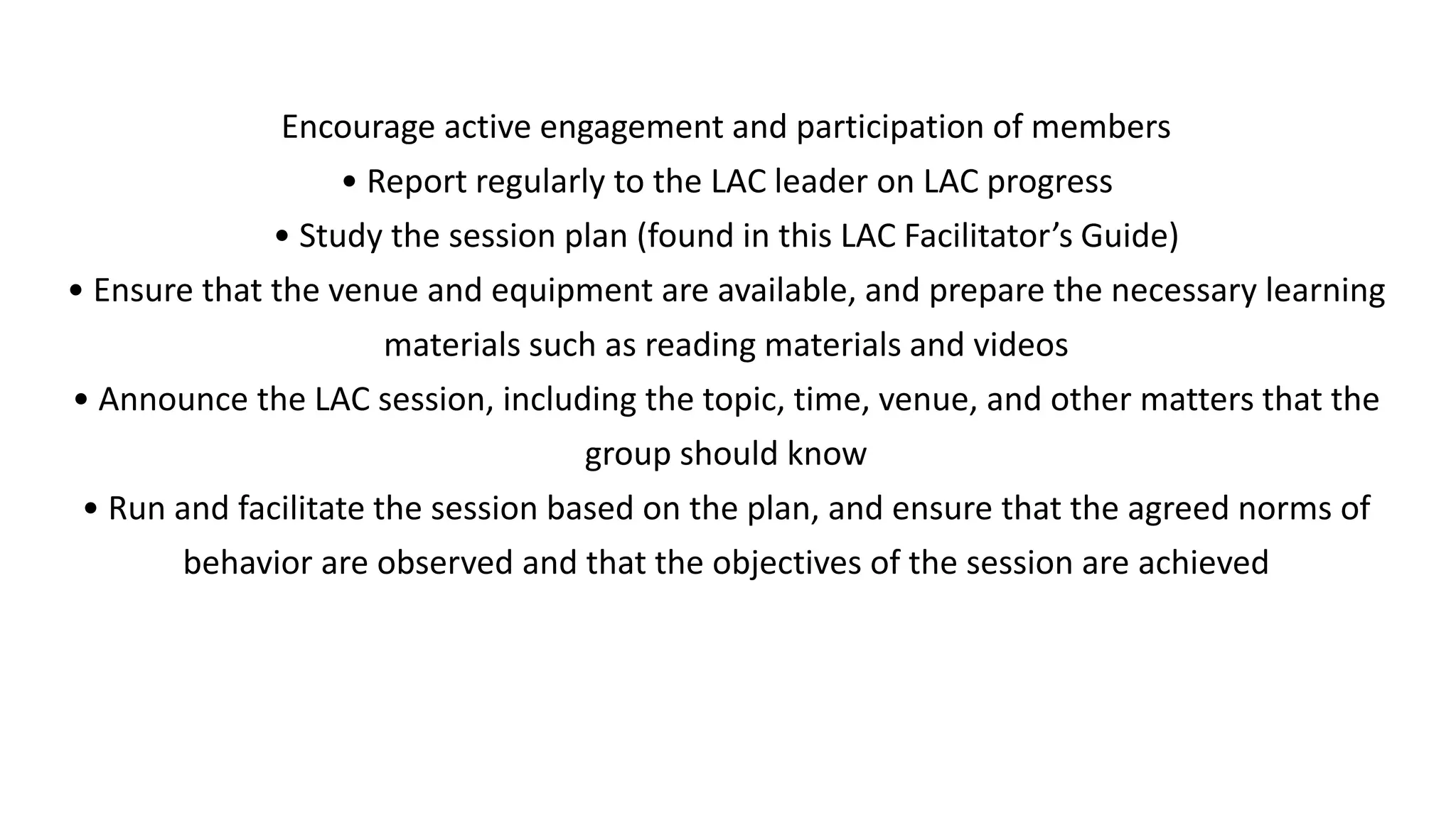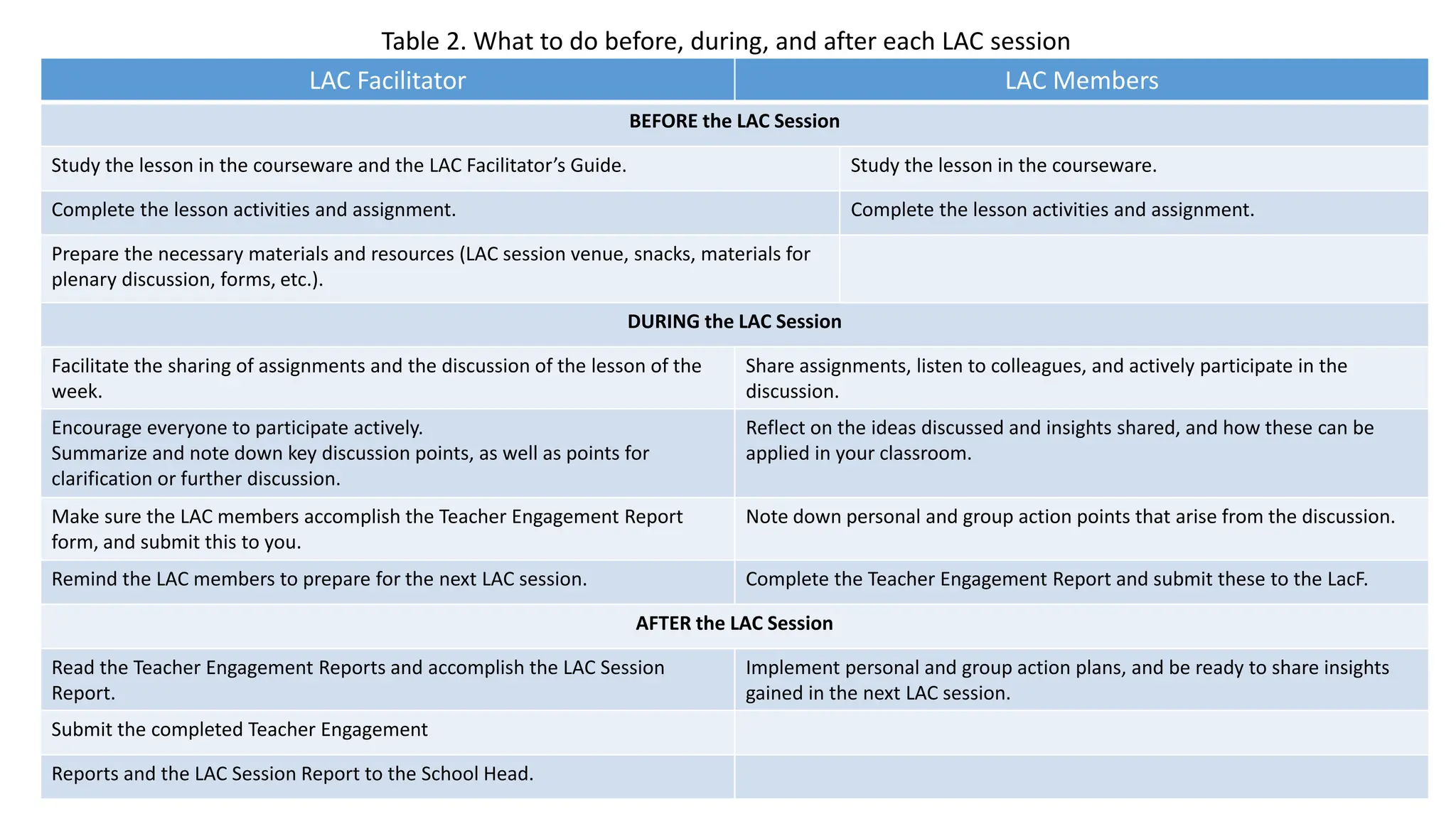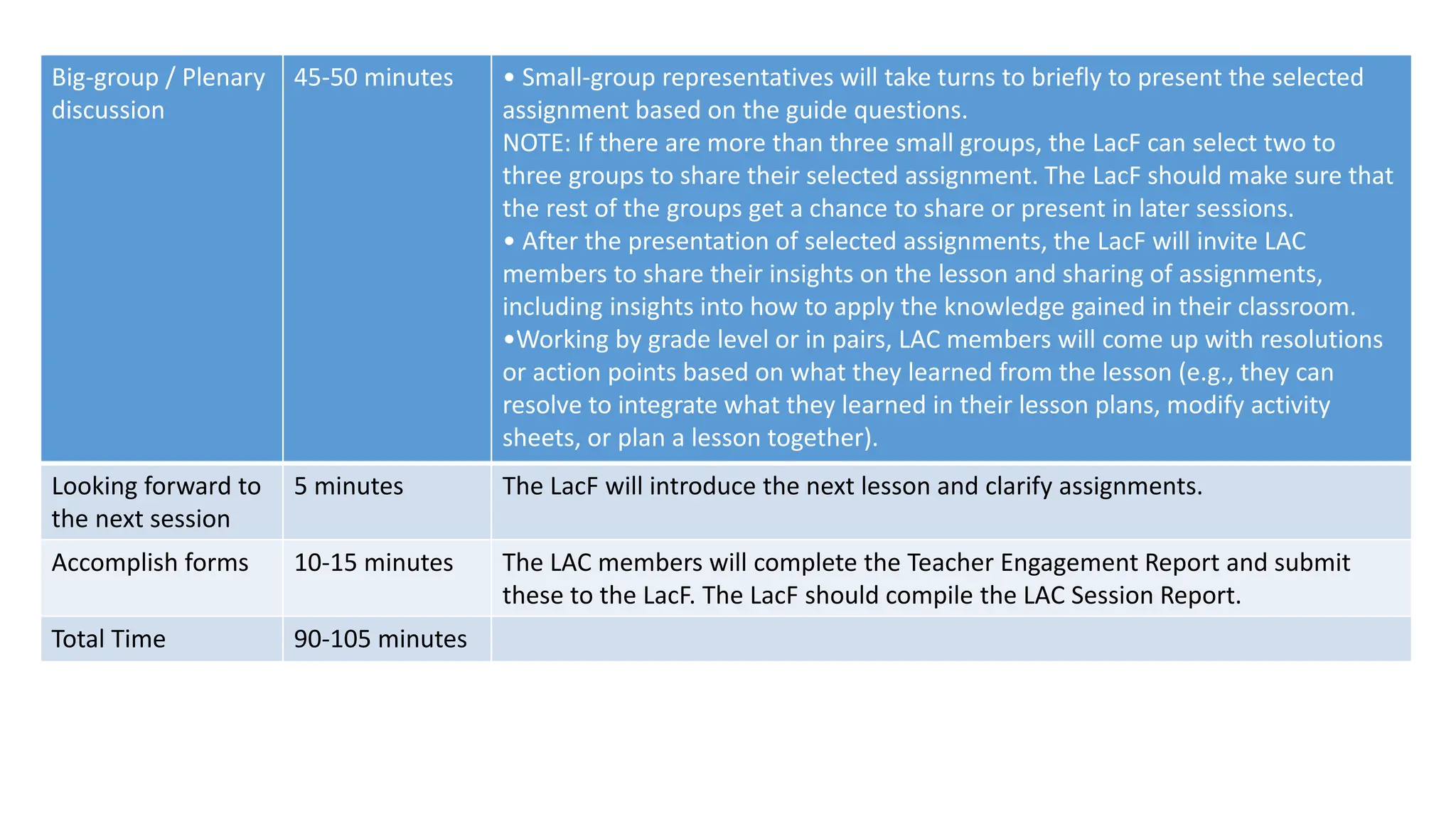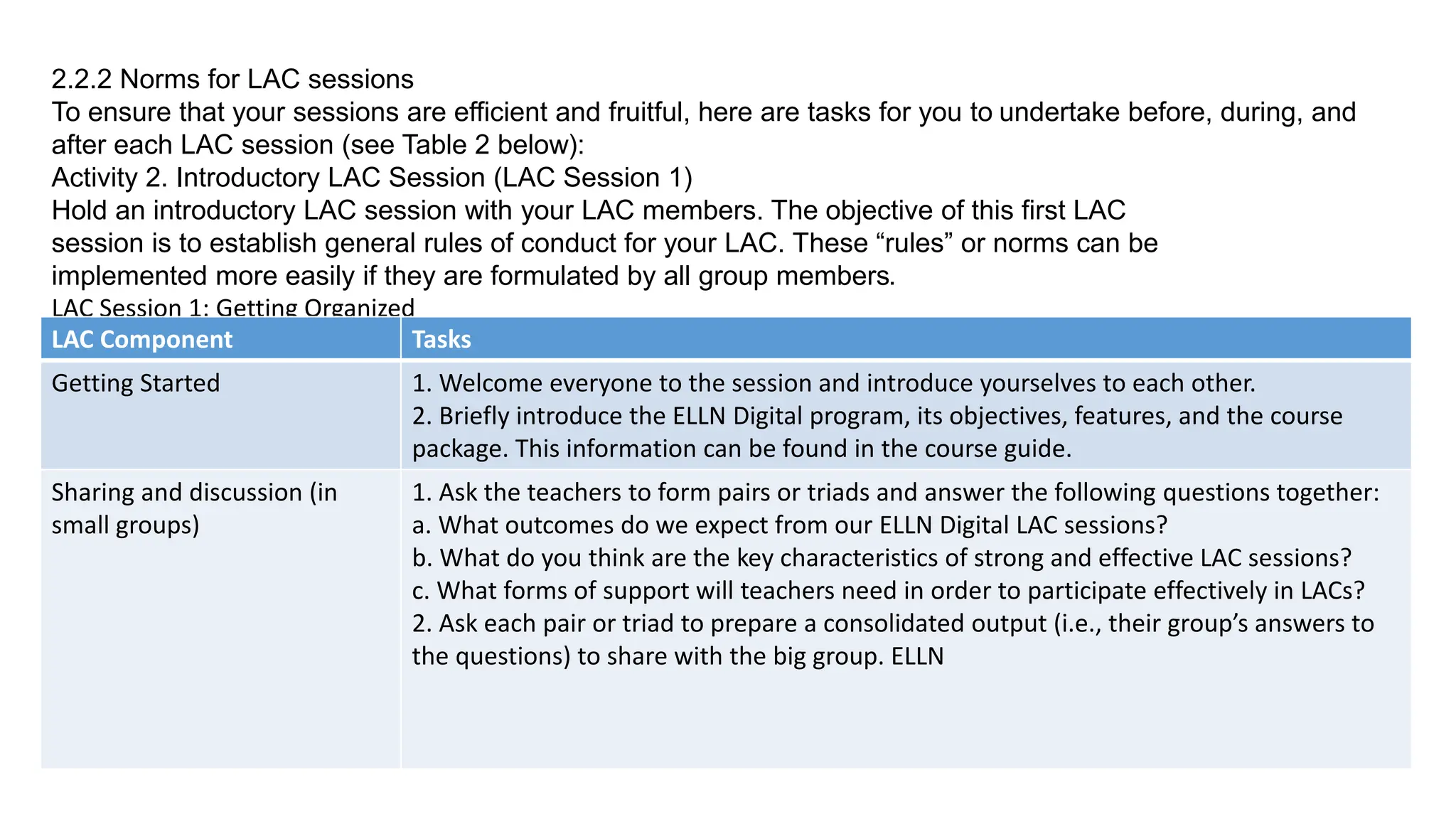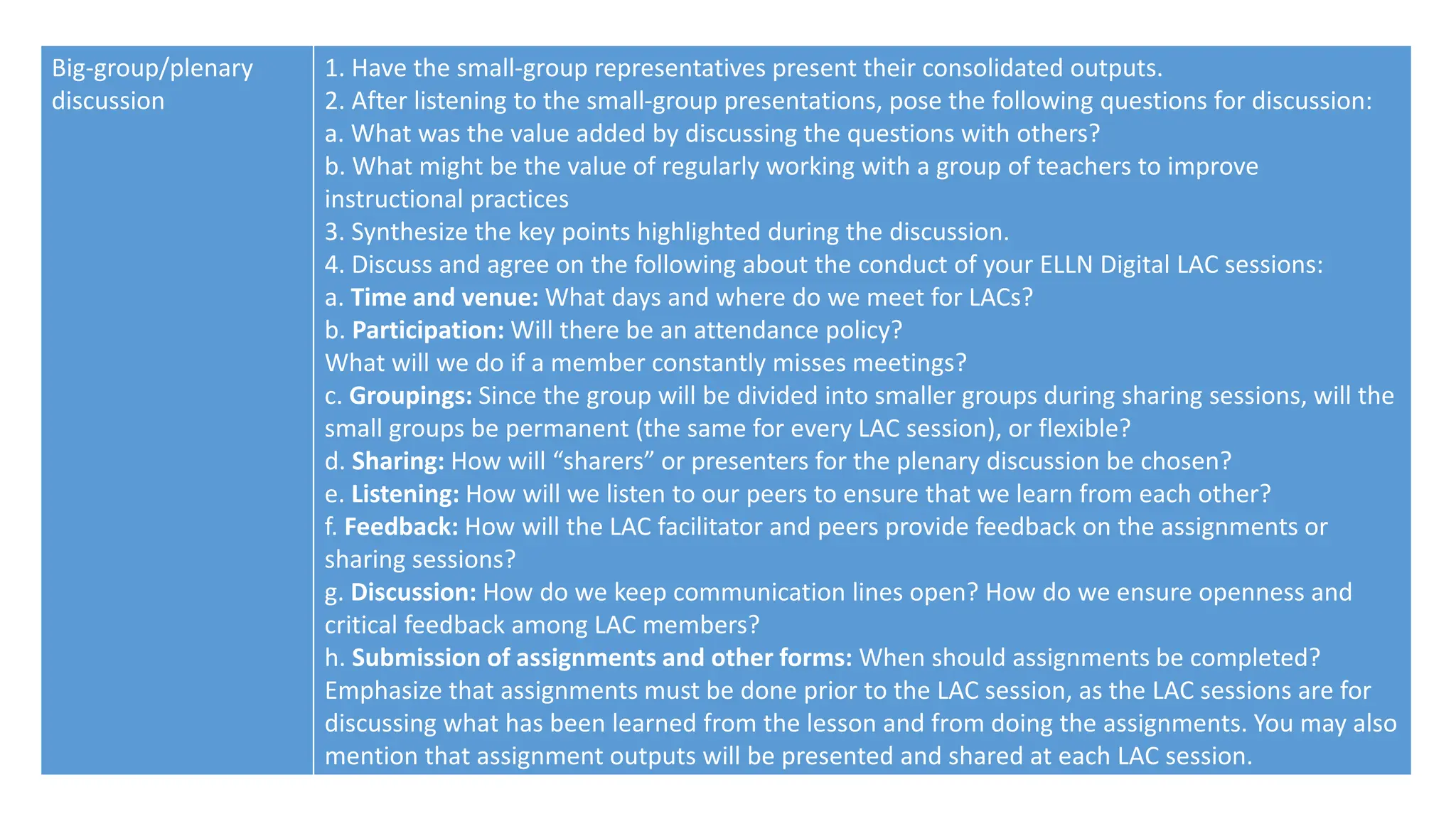The document describes the ELLN Digital blended professional development course for K-3 teachers. It aims to improve early literacy and numeracy instruction. The course has self-study and collaborative learning components. Teachers study online lessons and meet in school-based Learning Action Cells (LACs) to discuss lessons. LACs are formed with 5-15 teachers facilitated by a LAC Leader. LAC sessions involve sharing assignments, group discussions, and planning next steps to apply learning in classrooms. Feedback is gathered through teacher reports and facilitator reports to evaluate the program.
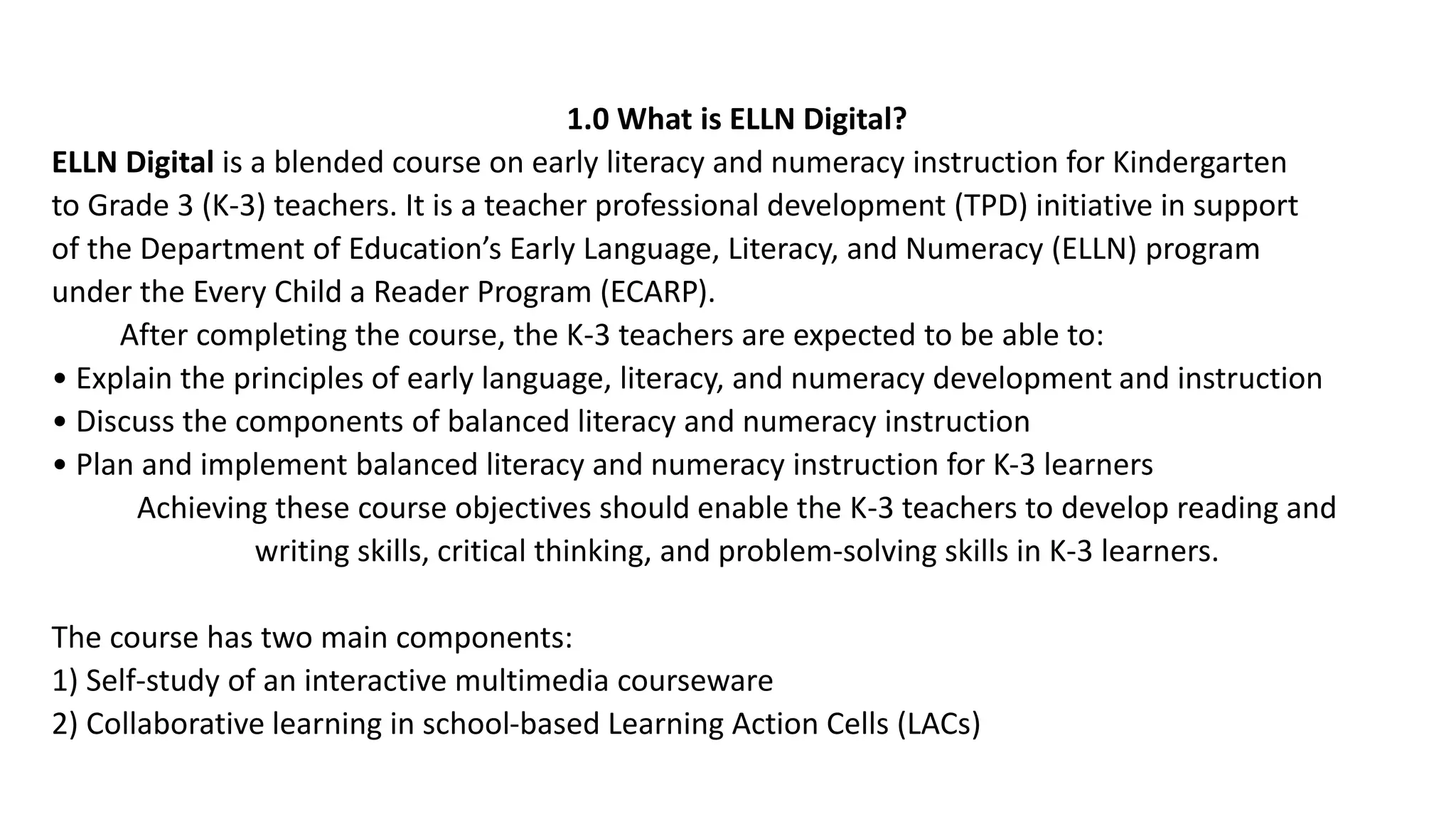
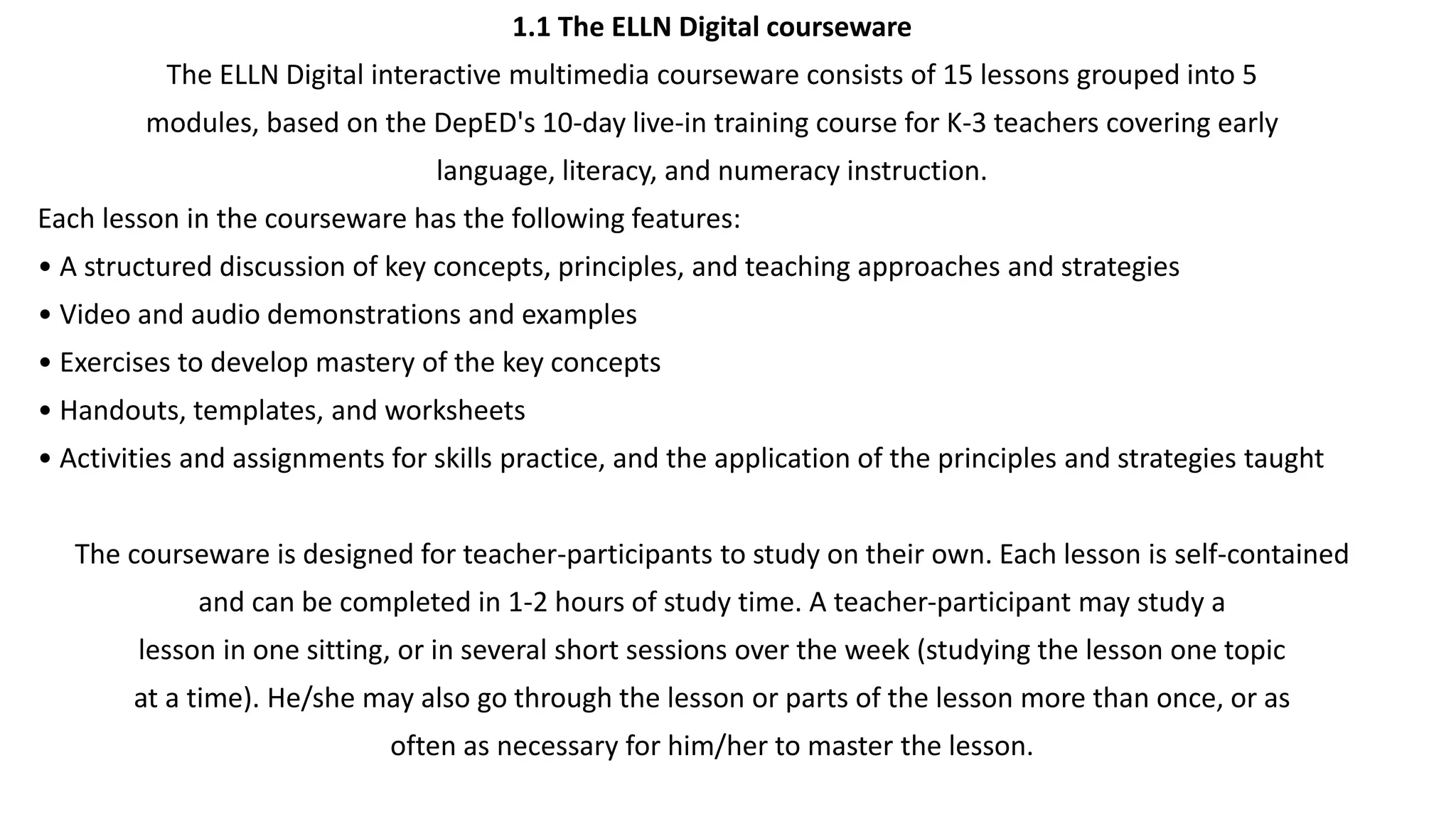
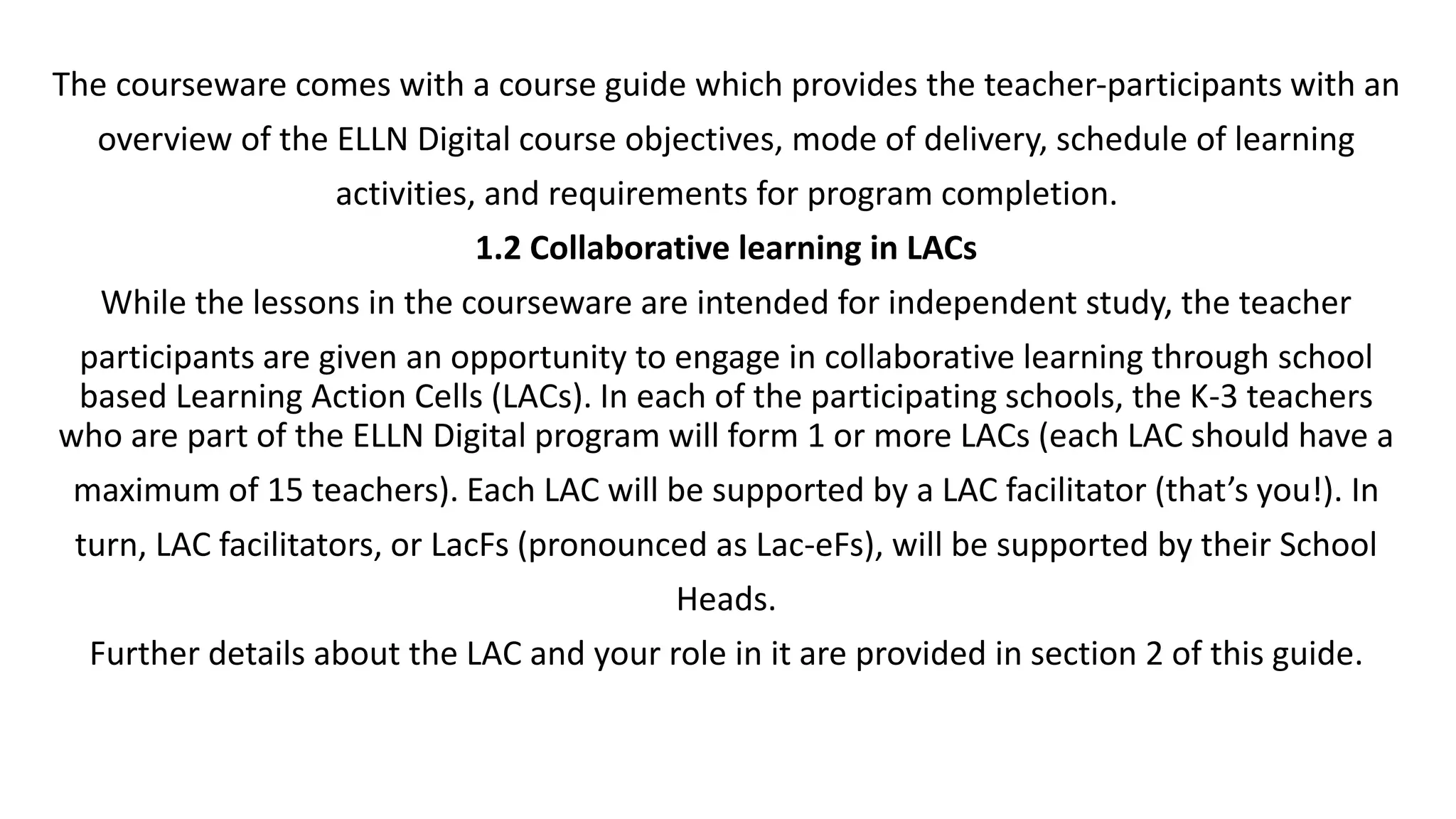
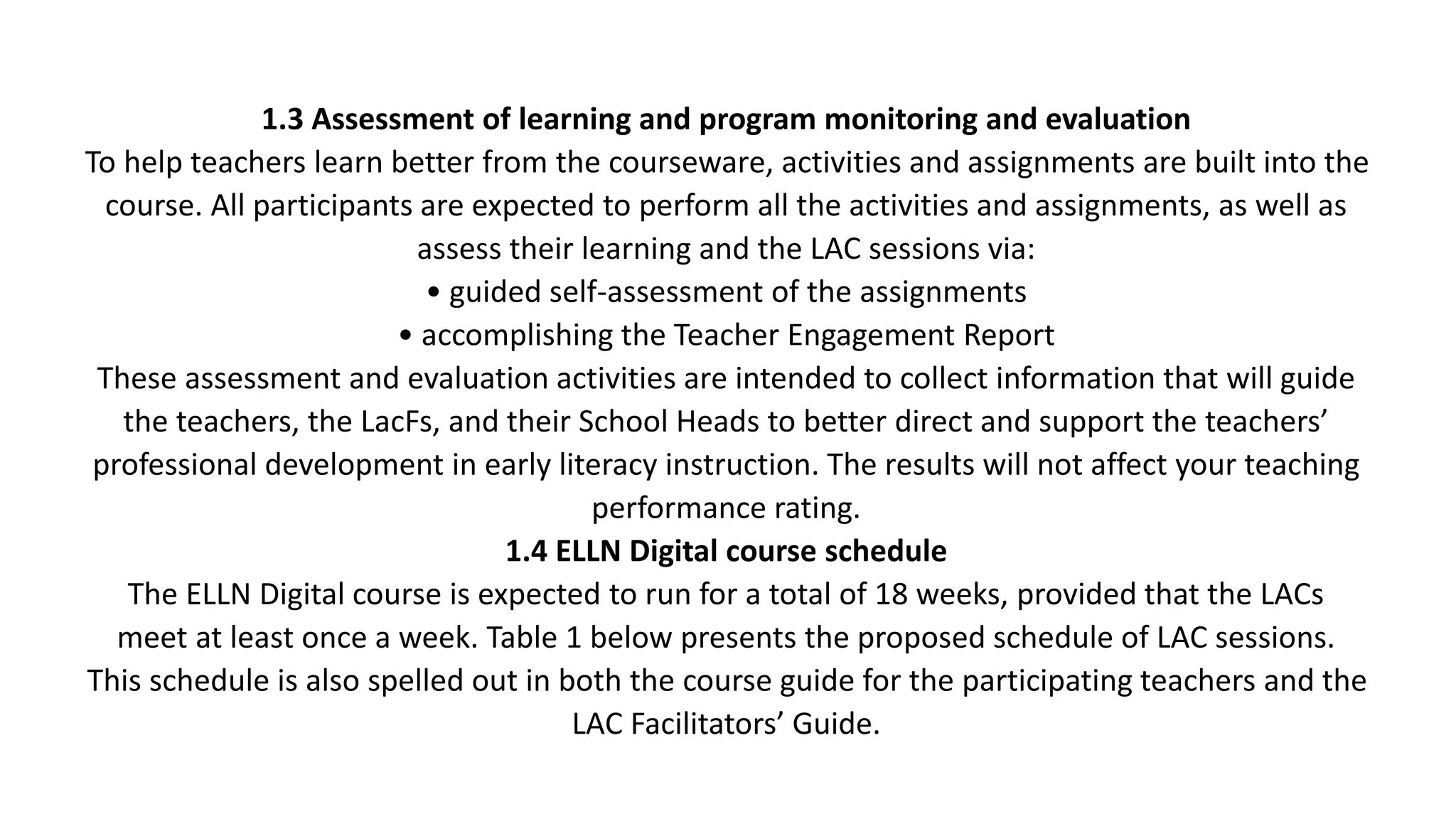
![2.0 What are LACs?
DepEd Order (DO) No. 35, s. 2016 defines a LAC as “a group of teachers who engage in
collaborative learning sessions to solve shared challenges encountered in the school,
facilitated by the school head or a designated LAC Leader. LACs [are] school-based
communities of practice that are positive, caring, and safe spaces.”
DO 35, s. 2016 lists the following objectives for conducting LAC sessions:
• To improve the teaching-learning process to improve learning among students
• To nurture successful teachers
• To enable teachers to support each other to continuously improve their content and
pedagogical knowledge, practice, skills, and attitudes
• To foster a professional collaborative spirit among School Heads, teachers, and the
community as a whole](https://image.slidesharecdn.com/484671890-elln-digital-pptx-240124075353-efd13485/75/Early-Language-Literacy-and-Numeracy-Power-Point-Presentation-5-2048.jpg)
